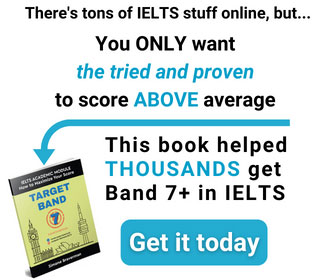Essay Writing
As an IELTS writing instructor, I am often asked by my students what the secret is to successful essay writing. When I tell them ‘lots of practice, lots of guidance and lots of patience’, they usually look at me a bit disappointed as though my answer was too obvious.
So I tell them, ‘just follow the 4 Cs.’
‘The 4 Cs?’ they ask with new interest.
Yes, the 4 Cs: conciseness, cohesion, coherence and composition. Each needs to be employed properly if you want to score well on your Task 2 essay. In this short article, which I am writing exclusively for www.ielts-blog.com, I would like to touch on each of the 4 Cs and describe how you can use these powerful ideas to heighten your IELTS score.
So let’s begin with conciseness. Unlike other languages which prize long and very elaborate sentences, proper written English is language that says a lot in few words. Students often falsely believe that the longer a sentence is the more academic it sounds.
Writing longer sentences in your response is problematic for 2 reasons. The first is it heightens the chances of errors related to coherence. The second is it makes it more difficult for you to control the grammar of the sentence, leading to silly grammatical mistakes. Too often, students receive disappointing marks on their IELTS essay simply because their long sentences led them to issues with coherence and grammar.
So how long should a sentence be? Including cohesive phrases (the second ‘C’ in our list), typical sentences are somewhere between 8 and 15 words.
Now let’s take a look at how to write these cohesive phrases.
Cohesion refers to words and phrases that help ideas link together. Cohesive phrases include wordings like…
Because of this, …
As this shows, …
As can clearly be seen from this example, …
It is clear that…
Thus, the idea that…
To illustrate this, …
After analyzing both points of view, …
To provide a summary, …
Without a doubt, this causes…
What I always suggest to students is to commit many of these phrases to memory and learn how to use them properly. When you get to your examination, you can use these phrases with confidence, which will not only save you time but also reduce the chances of grammatical mistakes.
Our third C is coherence, which is the notion that all ideas you present in your essay should be easily understood by your reader. As you can probably guess, using the cohesive phrases above correctly can really help to boost the coherence in your essay as they clarify your ideas. Coherence is also greatly improved by proper grammar, so make an effort to brush up on this prior to your examination.
Our final C, composition, refers to employing a proper essay structure. This means including a thesis (in the case of an argument essay), at least 2 supporting ideas, real-life examples, proper discussion of those examples as well as some kind of summary and finally a reasoned conclusion. To break it down, an argument essay is most likely going to contain 15 sentences partitioned into 4 paragraphs and follow a pattern something like this:
Introduction paragraph
- A background sentence giving some background information on the essay topic.
- A more detailed sentence linking the background sentence to the thesis.
- A thesis that presents your point of view on your given topic.
- An outline sentence declaring the 2 points you are going to use to support your thesis.
Supporting paragraph 1
- A topic sentence illustrating the first point you will be presenting to support your thesis (this point taken from your outline sentence).
- A sentence showing a real-life example of this topic in action.
- A discussion sentence that shows how your example links or proves your topic sentence.
- A conclusion sentence that links this entire paragraph back to your thesis.
Supporting paragraph 2
- A topic sentence illustrating the second point you will be presenting to support your thesis (this point taken from your outline sentence).
- A sentence showing a real-life example of this topic in action.
- A discussion sentence that shows how your example links or proves your topic sentence.
- A conclusion sentence that links this entire paragraph back to your thesis.
Conclusion paragraph
- A summary sentence that briefly states the 2 points you discussed in your supporting paragraphs.
- A restatement of your thesis using different words.
- A prediction or recommendation based on the topic you have been given.
By employing a logical structure like this you fulfill your essay’s requirement for proper composition.
So, in a nutshell, the 4 Cs make up the essential elements in a successful essay. Conciseness keeps sentences brief, cohesion helps the sentences link together, coherence maintains understanding in the essay and composition links all parts of the essay together logically.
Make an effort to use the 4 Cs properly and I guarantee your IELTS written mark will improve.
Good luck on your exam!
This article was written by Ryan Higgins, an online IELTS instructor, blogger and author. For more of his free IELTS resources, visit his blog.


